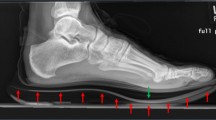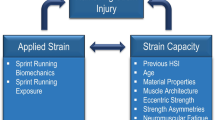Abstract
During a frontal collision, there are a range of lower extremity postures that the vehicle’s occupant may assume, potentially changing the way load is transmitted to this region of the body. While most experimental studies on the tibia’s injury tolerance assume that load is directed along the leg’s long axis, the effects of off-axis loading due to non-standard postures have not been well quantified, and commonly-cited injury criteria such as the Tibia Index do not directly account for posture. Therefore, twelve cadaveric tibias (paired from six donors) were subjected to off-axis impact loading in a custom-built test apparatus. One specimen from each pair was held at an angle of 15° relative to the direction of loading, while the contralateral was held at an angle of 30°, with these angles representing ankle plantarflexion and corresponding knee extension in a vehicle occupant. Specimens held at 30° fractured at lower forces than the specimens held at 15° (mean force = 5.8 vs. 7.5 kN). This indicates that posture should be incorporated into injury criteria for the tibia in future safety assessments instead of using a single force value based on axial impacts.







Similar content being viewed by others
References
Behr, M., G. Poumarat, T. Serre, P. J. Arnoux, L. Thollon, and C. Brunet. Posture and muscular behaviour in emergency braking: an experimental approach. Accid. Anal. Prev. 42(3):797–801, 2010.
Crandall, J. R., S. M. Kuppa, G. S. Klopp, G. W. Hall, W. D. Pilkey, and S. R. Hurwitz. Injury mechanisms and criteria for the human foot and ankle under axial impacts to the foot. Int. J. Crashworthiness 3(2):147–162, 1998.
Crandall, J. R., P. G. Martin, E. M. Sieveka, W. D. Pilkey, P. C. Dischinger, A. R. Burgess, T. D. O’Quinn, and C. B. Schmidhauser. Lower limb response and injury in frontal crashes. Accid. Anal. Prev. 30(5):667–677, 1998.
Dischinger, P. C., B. M. Cushing, and T. J. Kerns. Injury patterns associated with direction of impact: drivers admitted to trauma centers. J. Trauma 35(3):454–459, 1993.
Funk, J. R., J. R. Crandall, L. J. Tourret, C. B. MacMahon, C. R. Bass, and J. T. Patrie. The axial injury tolerance of the human foot/ankle complex and the effect of Achilles tension. J. Biomech. Eng. 124(6):750–757, 2002.
Gallenberger, K., N. Yoganandan, and F. Pintar. Biomechanics of foot/ankle trauma with variable energy impacts. Ann. Adv. Automot. Med. 57:123–132, 2013.
Huelke, D. F., J. O’Day, and J. D. States. Lower extremity injuries in automobile crashes. Accid. Anal. Prev. 14(2):95–106, 1982.
Huston, R. L. Fundamentals of Biomechanics. Boca Raton: Taylor & Francis Group, pp 277, 2013.
Kuppa, S. Wang, J., Haggner, M., Eppinger, R.; Lower extremity injuries and associated injury criteria; Proceedings of 17th ESV Conference, Paper No. 457:1-15, 2001.
McKay, B. J., and C. A. Bir. Lower extremity injury criteria for evaluating military vehicle occupant injury in underbelly blast events. Stapp Car Crash J. 53:229–249, 2009.
Mertz, H. J. Anthropomorphic test devices. In: Accidental Injury: Biomechanics and Prevention, edited by A. M. Nahum, and J. W. Melvin. New York: Springer-Verlag, 1993, pp. 72–88.
Quenneville, C. E., S. D. McLachlin, G. S. Greeley, and C. E. Dunning. Injury tolerance criteria for short-duration axial impulse loading of the isolated tibia. J. Trauma 70(1):E13–E18, 2011.
Read, K. M., J. A. Kufera, P. C. Dischinger, T. J. Kerns, S. M. Ho, A. R. Burgess, and C. A. Burch. Life-altering outcomes after lower extremity injury sustained in motor vehicle crashes. J. Trauma 57(4):815–823, 2004.
Roaas, A., and G. B. J. Andersson. Normal range of motion of the hip, knee and ankle joints in male subjects, 30–40 years of age. Acta Orthop. Scand. 53(2):202–208, 1982.
Seipel, R. C., F. Pintar, N. Yoganandan, and M. D. Boynton. Biomechanics of calcaneal fracture: a model for the motor vehicle. Clin. Orthop. Relat. Res. 388:218–224, 2001.
Yoganandan, N., Pintar, F., Boynton, M., Begeman, P., Prasad, P., Kuppa, S.M., Morgan, R.M., and Eppinger, R.H.; Dynamic axial tolerance of the huma foot-ankle complex; SAE Technical Paper 9624626: 207-218, 1996.
Acknowledgments
The authors would like to acknowledge the sources of funding for this work: Canadian Foundation for Innovation (CFI), Natural Sciences and Engineering Research Council of Canada (NSERC), and the Ontario Research Fund (ORF).
Author information
Authors and Affiliations
Corresponding author
Additional information
Associate Editor Joel D. Stitzel oversaw the review of this article.
Rights and permissions
About this article
Cite this article
Chakravarty, A.B., Martinez, A.A. & Quenneville, C.E. The Injury Tolerance of the Tibia Under Off-Axis Impact Loading. Ann Biomed Eng 45, 1534–1542 (2017). https://doi.org/10.1007/s10439-017-1824-6
Received:
Accepted:
Published:
Issue Date:
DOI: https://doi.org/10.1007/s10439-017-1824-6




